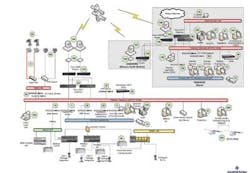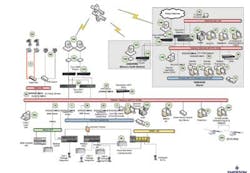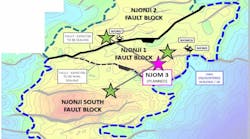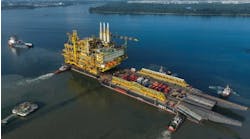View Article as Single page
AMS Suite
The AMS integrated software application (AMS Suite) is used to perform device configuration, calibration, documentation, and predictive diagnostics of plant instrumentation and equipment assets. It runs on a dedicated asset performance management (APM) server connected to the platform's telecom and PCS VLANs. Suite components include Machinery Health Manager, Server Plus, and Asset Performance Management (APM).
APM provides access to integrated information from multiple data sources via real-time analyses and reports. It acquires, consolidates and aggregates information for the AMS intelligent device manager and machinery health manager. This enables onshore operations to monitor the performance of critical assets remotely and to predict, detect and correct conditions that could potentially lead to equipment failure and unplanned downtime.
Onshore equipment
In the onshore control room in Aberdeen is an application station running RAS that connects two remote operator stations to the offshore control system. The onshore RAS server also hosts a continuous historian and alarm and event chronicle to act as a backup to the offshore event chronicle. This can be used to examine SOE data onshore if communications to the platform are lost.
Also onshore is a remote engineering station that handles remote engineering, configuration and diagnostic functions via Microsoft Remote Desktop Protocol (RDP). This is necessary when implementing certain control system functions over low bandwidth, high latency communication networks.
There is also a standby PC to enable the onshore control room to access the remote systems via RDP, which provides remote display and input capabilities over network connections for Windows-based applications running on a server. It acts as an alternative access mechanism in the case of a failure of the remote application station.
An OSI PI Server is connected to the onshore corporate LAN. A PI-OPC interface installed on the offshore application station forwards data collected from the downhole pump systems.
A PABX telephony system provides voice communication to a corresponding unit offshore via the satellite link using VOIP (Voice Over IP).
A PC-based dispatcher console interfaces with the platform radio equipment which includes UHF radio, aero VHF (AM) radio, nondirectional beacon (NDB) equipment for aircraft, marine VHF (FM) radio, and proprietary public address and general alarm (PAGA) equipment. The onshore equipment also includes a workstation for the oil spill/intruder detection system.
Schedule
The equipment from Emerson was in front-end engineering and design from June 2012 until March 2013, at which point the execution phase began with the delivery of equipment to the platform fabrication yard in Methil, Scotland. The topsides then sailed to the offshore site was installed on Sept. 9, 2014. An offshore commissioning program will then commence with the exact timing of first oil determined by the progress of that program.
Conclusion
The Solan platform is intended to operate with no onboard personnel, and is provided with an integrated control and safety system that can be operated via satellite link from an onshore operating room in Scotland. Remote operation (which is expected to be expanded in the future to cover additional fields) will reduce operating costs.




